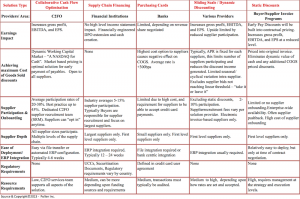
Financial statements tell the story of financial health through various metrics, such as cash flow, liquidity, and profit and loss. The goal may be to hold current levels steady or to strive for operational growth. Operating profit as a percentage of sales is referred to as operating margin. The operating profit margin would be 60% if the operating profit is $60,000 and sales are $100,000. As a manager, you may also need to understand the accounting ratios being explained to you by your accountants.
The Balance Sheet for Financial Ratio Analysis
This measure provides information on the company’s ability to pay its debts and helps indicate whether there’s a need to address some debt issues. Accounting ratios can provide helpful insights into a company’s operations and financial health. It is a way to measure how much money a company has available to cover its expenses, including interest payments on debt.
Fixed Charge Coverage
The company should sell some of this unproductive plant and equipment, keeping only what is absolutely necessary to produce their product. There are three debt management ratios that help a business owner evaluate the company in light of its asset base and earning power. Those ratios are the debt-to-asset ratio, the times interest earned ratio, and the fixed charge coverage ratios. Other debt management ratios exist, but these help give business owners the first look at the debt position of the company and the prudence of that debt position. If your inventory turnover is rising, that means you are selling your products faster.
Net and Gross Profit Margin Calculator
Though some benchmarks are set externally (discussed below), ratio analysis is often not a required aspect of budgeting or planning. Liquid assets include cash and anything that can be easily converted to cash. They include marketable securities, government bonds, foreign currencies, and treasury bills. Cash can be on hand or held in various bank accounts and savings vehicles. Amanda Bellucco-Chatham is an editor, writer, and fact-checker with years of experience researching personal finance topics. Specialties include general financial planning, career development, lending, retirement, tax preparation, and credit.
Earning Margin
Accounting ratios come with wide-reaching use and necessity, even for those of us who are not accountants. Many of us like to invest money that we look at as long- or short-term opportunities. A savvy investor knows how to use accounting ratios to determine whether a stock presents a lucrative opportunity or perhaps a liability that other investors have yet to realize.
- The dividend payout ratio is the percentage of net income paid out to investors through dividends.
- The ratio measures the value of a company’s dividends compared to the market share.
- Long payment periods are good for the customer’s liquidity but can damage relationships with suppliers.
- Comparing financial ratios with that of major competitors is done to identify whether a company is performing better or worse than the industry average.
What does a high/low current ratio mean?

The higher the cash ratio, the more efficiently a company uses its resources. Sometimes called the gross profit margin ratio, it compares the gross margin of a company to its revenue. The cash flow coverage ratio measures a company’s ability to pay obligations with operating cash flows. Three common liquidity ratios are the quick ratio, botkeeper recognized as a top aifintech 100 company current ratio, and cash flow coverage ratio. Comparative ratio analysis can be used to understand how a company’s performance compares to similar companies in the same industry. For example, a company with a 10% gross profit margin may be in good financial shape if other companies in the same sector have gross profit margins of 5%.
Our writing and editorial staff are a team of experts holding advanced financial designations and have written for most major financial media publications. Our work has been directly cited by organizations including Entrepreneur, Business Insider, Investopedia, Forbes, CNBC, and many others. Our goal is to deliver the most understandable and comprehensive explanations of financial topics using simple writing complemented by helpful graphics and animation videos. We follow strict ethical journalism practices, which includes presenting unbiased information and citing reliable, attributed resources. At Finance Strategists, we partner with financial experts to ensure the accuracy of our financial content. Over-trading companies are likely to face substantial difficulties in meeting their day-to-day obligations.
Sign up for a solid CFA course to learn more advanced financial analysis techniques. The more you analyse statements, the better you’ll become at interpreting the financial health of a company. Research further, explore financial statements of companies that interest you, and put your newfound knowledge to the test. By mastering financial statement analysis, you will be well on your way to making informed investment decisions and navigating the complex world of finance. We will cover the three key financial statement analysis techniques (ratio analysis, trend analysis and cash flow analysis) in this article. By mastering these techniques, you’ll be able to understand the hidden stories within financial statements and make informed financial decisions.
An acid test ratio is an accounting ratio that helps to determine whether a company’s financial statements are in good shape. The acid test ratio compares a company’s net income to its total assets. The acid test ratio measures how much money a company has to pay its debts. For going concern accounting and auditing example, a company with a high debt-to-equity ratio may be struggling financially, while a company with a low debt-to-equity ratio may be doing well. Other common accounting ratios include net income to total assets, operating income to total assets, and return on equity.
A high ratio could also indicate that the company is not making sufficient use of cheap short-term finance. For example, if you are told that a business has an Operating profit margin of 5% and an parts of a check and where to find information asset turnover of 2, then its ROCE will be 10% (5% x 2). It means that any change in ROCE can be explained by either a change in Operating profit margin, or a change in asset turnover, or both.